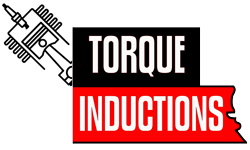- Posted on
- • Classic
Two-Stroke Engine Regulations: Global Bans, Grandfather Rules, and What Fans Should Know
- Author
-
-

- User
- Torque
- Posts by this author
- Posts by this author
-

From Dhaka to Delhi: Bans vs. Grandfathering in Two-Stroke Engine Laws
Why this matters (and what "grandfathered" means)
Many regions restrict high-emitting two-stroke engines—but they often allow existing vehicles to keep operating under grandfathered legality (limited use, special plates, or fees), while new sales/registrations face tighter rules. Understanding this split helps riders, collectors, and event organizers stay compliant without surprises.
Quick map: where bans bite vs. where classics survive
India: modern sales strict, vintage use allowed (limited)
India's Vintage Motor Vehicle Rules, 2021 define "vintage" (50+ years) and allow limited, non-commercial use with special registration; fees are specified nationally.
Delhi historically stopped registering new two-stroke autorickshaws (2002), pushing fleets toward cleaner engines.
European Union & UK: emissions standards + city zones
EU motorcycle emissions are now at Euro 5 for new sales (from 2020); older carbureted two-strokes rarely comply without major changes.
London ULEZ: most bikes must meet Euro 3 (NOx) or pay, but historic vehicles (40+ years) are exempt from ULEZ charges.
Germany Umweltzone (LEZs): classic vehicles with "H" historic plates (30+ years) are generally exempt from stickers/entry limits.
United States (example: boating)
California does not ban all two-strokes statewide, but local waterways can restrict older carbureted two-strokes (direct-injection 2T typically allowed). Lake Tahoe's regional ban on high-emission carb 2T is a landmark case.
How "bans" usually work (and why they don't kill classics)
Most policies don't criminalize ownership of older machines. Instead, they:
Block new sales/registrations below a set emission class (e.g., Euro/BS norms).
Charge to enter clean-air zones (daily fees) unless you meet standards or hold historic status.
Carve out exemptions for heritage vehicles, often with mileage or usage limits (exhibitions, rallies).
This balances public-health gains with cultural preservation—hence "bans vs. grandfathered legality."
Pros & cons of grandfathering (for riders & regulators)
Pros
Preserves heritage and enthusiast culture.
Predictable compliance path (historic plates, limited use).
Targets real-world pollution by focusing on daily use rather than occasional shows.
Cons
Patchwork rules across cities/countries create confusion.
Event clusters can cause local exposure spikes if unmanaged.
Risk of loopholes if non-historic daily riders masquerade as "classic."
Practical compliance checklist (vintage two-stroke owners)
Know your category: Are you historic/vintage (age threshold + originality) or a normal daily rider?
City zone rules: Check LEZ/ULEZ entry requirements and exemptions before rides; many zones accept historic status but still limit commercial use.
Paperwork: Keep registration class and evidence of historic status handy; fines often hinge on missing documentation.
Plan routes/events: Avoid school-hour idling and dense pedestrian zones; even exempt bikes can face complaints.
Boating note (if you're 2T on water): Check local lake rules—Tahoe-style carb 2T bans exist beyond motorcycling.
Fun facts (policy edition)
Lake Tahoe's 1999 two-cycle carb ban preceded many urban LEZ schemes—and measurable water quality improved afterward.
London's ULEZ exempts 40-year-old historic vehicles from daily charges, helping keep classic rides visible at meets—legally.
FAQs
Q: My 1980s two-stroke passes basic inspection. Can it enter London ULEZ free?
A: Only if it's registered Historic (40+ years) or independently proven to meet ULEZ NOx limits—otherwise a daily charge applies.
Q: Do Germany's Umweltzones ban my vintage scooter?
A: Generally no if you have an H-plate (30+ years)—historic vehicles are exempt from LEZ sticker rules in many cities (check local details).
Q: Are two-stroke engines banned across California?
A: No statewide ban; local waterways can restrict high-emission carb 2T (e.g., Tahoe). Direct-injection two-strokes are typically allowed.
Q: In India, can I daily-drive a 50-year-old two-stroke once it's "vintage"?
A: The 2021 rules allow limited, non-commercial use (exhibitions/showcases), not daily commuting. Check your state RTO for enforcement details.
Bottom line
The regulatory landscape isn't a simple "ban": it's a tightening of new sales/registrations and urban access, paired with grandfathered legality for genuine historic vehicles. If you run a vintage two-stroke, the winning formula is paperwork + planning: secure the right historic status, understand zone rules, and limit everyday use to keep both the culture and compliance alive.
